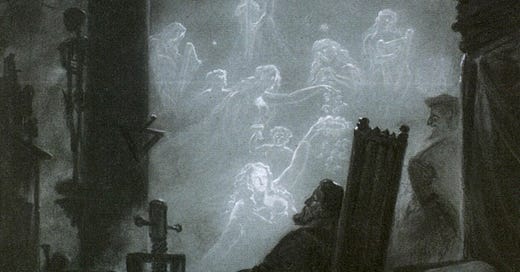Faust’s Dream (1852) is a painting by the German painter Carl Gustav Carus (1789-1869).
Goethe’s “Faust” (1808) tells the story of a young scholar (Faust) who makes a pact with the devil (Mephistopheles), who promises to grant everything he desires in return for his soul.
The painting depicts a scene from Faust Act 1 in which the devil Mephistopheles shows the young scholar a “Walpurgis Night dream”. Ghostly figures of scantily clad women appear to seduce the young scholar, offering him their company, wine, and music.
Mephistopheles grins, as he offers the young man everything he desires. On the left side of the painting we see a skeleton, foreshadowing Faust’s fate. Is he willing to go all the way to pursue his aspirations?
Like Goethe, Gustav Carus wasn’t just an artist. Similar to many of the German Romantics, he was a man of many talents. He worked as a writer, scientist, and physician. In fact, Carl Jung credited Carus with establishing the centrality of the subconscious to the psyche. He was also a lifelong friend of Goethe, and painted a remarkable portrait of his tomb following his death.
Julian
Thanks for reading! This post was made possible by paying subscribers. If you’ve enjoyed this post, please consider becoming a paying subscriber. It helps me keep these posts open-access and free for everyone else. To sign up, click below.




